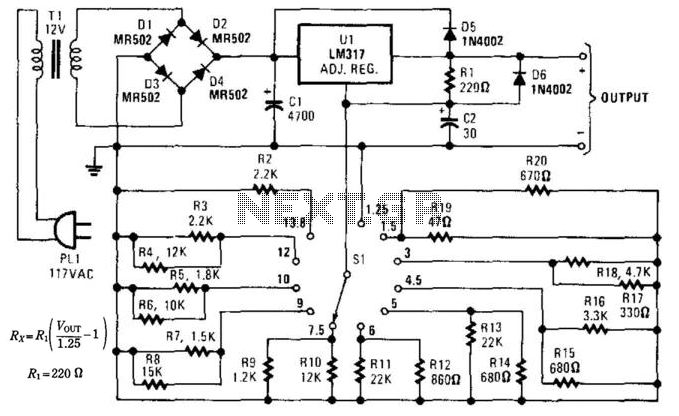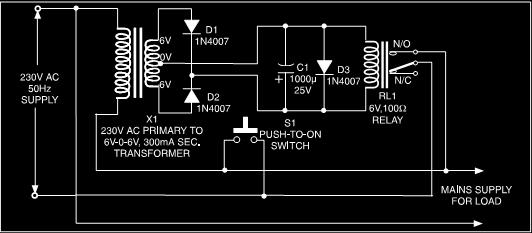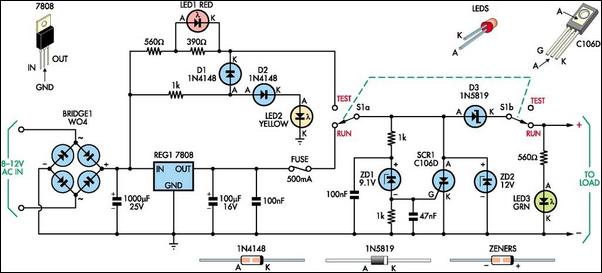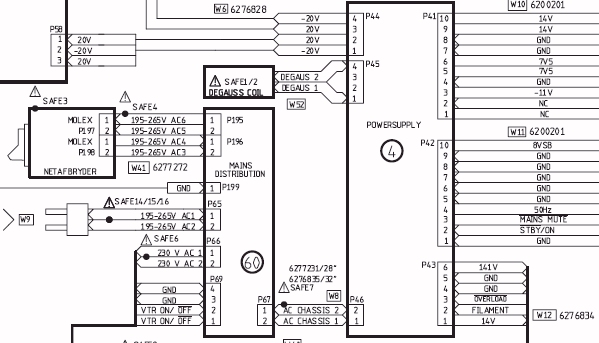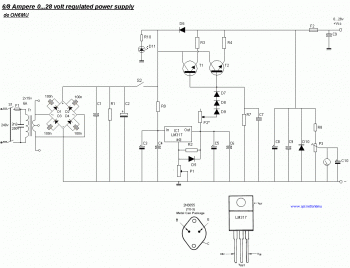
3V Supply Splitter
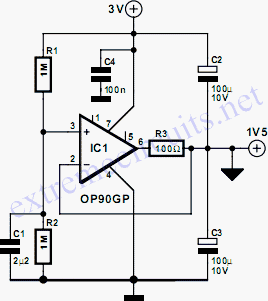
Many modern circuits operate from a single supply voltage of 3V. However, they often require a virtual ground at half the supply voltage for optimal performance. The splitter depicted in the diagram divides the supply voltage using a high-resistance potential divider, R1-R2, and buffers the resulting 1.5V line with an operational amplifier (op amp). As the op amp utilized is not of a fast type, the output is decoupled using a capacitive divider, C2-C3. This configuration ensures that the impedance of the virtual ground point remains low across a wide frequency range. The voltage at the junction of C2-C3-R3 is fed back to the inverting input of IC1, making the circuit function as a standard voltage follower. Resistor R3 contributes to maintaining stable regulation. The circuit can regulate ±2mA without difficulty. Due to the low current consumption by IC1 and the high resistance of R1 and R2, the overall current drain is minimal. In the absence of a load, the prototype demonstrated a current draw of 13 µA, with 1.5 µA flowing through R1-R2. Furthermore, since IC1 can operate at a voltage as low as 1.6V, the splitter remains fully functional even as the battery approaches the end of its charge or life.
The described circuit serves a crucial role in enabling modern electronic devices to operate efficiently from a single supply voltage. The potential divider formed by resistors R1 and R2 accurately bisects the 3V supply, producing a stable 1.5V virtual ground. This virtual ground is essential for providing a reference point for other circuit components, ensuring consistent performance.
The use of an op amp as a buffer is a strategic choice, allowing for high input impedance and low output impedance, which is vital for maintaining signal integrity. The op amp's output is decoupled by capacitors C2 and C3, which not only stabilize the voltage but also filter out high-frequency noise, thus preserving the quality of the virtual ground.
Feedback from the junction of C2, C3, and R3 to the inverting input of the op amp forms a negative feedback loop, which enhances the linearity and stability of the output voltage. Resistor R3 plays a significant role in ensuring that the circuit can handle variations in load without affecting the output voltage, maintaining performance even when the load changes.
The ability of the circuit to regulate ±2mA is indicative of its utility in various applications where small current levels are needed. The low overall current drain of 13 µA, primarily due to the high resistance values of R1 and R2, makes this circuit suitable for battery-operated devices, prolonging battery life and ensuring efficiency.
Moreover, the op amp's capability to function at a minimum voltage of 1.6V allows the circuit to remain operational even as the supply voltage drops, a common scenario in battery-powered applications. This feature is particularly advantageous in ensuring continuous operation until the battery is fully depleted, providing reliability in critical applications.
In summary, this circuit design exemplifies an effective approach to creating a virtual ground in modern electronic systems, balancing performance, efficiency, and reliability.Many modern circuits tend to work from a single supply voltage of 3V. But often they need a virtual earth at half the supply voltage for efficient operation. The splitter shown in the diagram bisects the supply voltage with a high-resistance potential divider, R1-R2, and buffers the resulting 1. 5 V line with an op amp. Since the op amp used is not a fast type, the output is decoupled by capacitive divider C2-C3. This ensures that the impedance of the virtual earth point remains low over a wide frequency band. Because the potential at the junction C2-C3-R3 is fed back to the inverting input of IC1, the circuit becomes a standard voltage follower. Resistor R3 ensures that the regulation remains stable. The circuit can regulate ±2mA without any difficulties. Because of the low current drawn by IC1, and the high resistance of R1 and R2, the overall current drain is low.
In the absence of a load, it was 13 µA in the prototype, of which 1. 5 µA flows through R1-R2. Finally, since IC1 can operate from a voltage as low as 1. 6V, the splitter will remain fully operational when the battery nears the end of its charge or life. 🔗 External reference
The described circuit serves a crucial role in enabling modern electronic devices to operate efficiently from a single supply voltage. The potential divider formed by resistors R1 and R2 accurately bisects the 3V supply, producing a stable 1.5V virtual ground. This virtual ground is essential for providing a reference point for other circuit components, ensuring consistent performance.
The use of an op amp as a buffer is a strategic choice, allowing for high input impedance and low output impedance, which is vital for maintaining signal integrity. The op amp's output is decoupled by capacitors C2 and C3, which not only stabilize the voltage but also filter out high-frequency noise, thus preserving the quality of the virtual ground.
Feedback from the junction of C2, C3, and R3 to the inverting input of the op amp forms a negative feedback loop, which enhances the linearity and stability of the output voltage. Resistor R3 plays a significant role in ensuring that the circuit can handle variations in load without affecting the output voltage, maintaining performance even when the load changes.
The ability of the circuit to regulate ±2mA is indicative of its utility in various applications where small current levels are needed. The low overall current drain of 13 µA, primarily due to the high resistance values of R1 and R2, makes this circuit suitable for battery-operated devices, prolonging battery life and ensuring efficiency.
Moreover, the op amp's capability to function at a minimum voltage of 1.6V allows the circuit to remain operational even as the supply voltage drops, a common scenario in battery-powered applications. This feature is particularly advantageous in ensuring continuous operation until the battery is fully depleted, providing reliability in critical applications.
In summary, this circuit design exemplifies an effective approach to creating a virtual ground in modern electronic systems, balancing performance, efficiency, and reliability.Many modern circuits tend to work from a single supply voltage of 3V. But often they need a virtual earth at half the supply voltage for efficient operation. The splitter shown in the diagram bisects the supply voltage with a high-resistance potential divider, R1-R2, and buffers the resulting 1. 5 V line with an op amp. Since the op amp used is not a fast type, the output is decoupled by capacitive divider C2-C3. This ensures that the impedance of the virtual earth point remains low over a wide frequency band. Because the potential at the junction C2-C3-R3 is fed back to the inverting input of IC1, the circuit becomes a standard voltage follower. Resistor R3 ensures that the regulation remains stable. The circuit can regulate ±2mA without any difficulties. Because of the low current drawn by IC1, and the high resistance of R1 and R2, the overall current drain is low.
In the absence of a load, it was 13 µA in the prototype, of which 1. 5 µA flows through R1-R2. Finally, since IC1 can operate from a voltage as low as 1. 6V, the splitter will remain fully operational when the battery nears the end of its charge or life. 🔗 External reference
